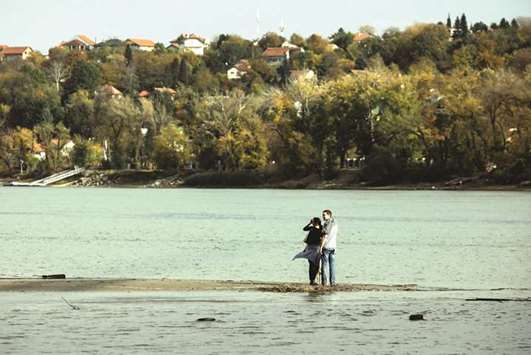A protracted drought and higher than average September-October temperatures have lowered water levels across the Western Balkans, hitting hydropower output and driving up power prices.
Along the Danube and Sava rivers, sandbanks unseen for decades emerged as waters gradually subsided due to scarce rainfall.
Navigation along stretches of the Danube in Hungary has been halted or was significantly slower.
In Serbia, this week and last, ships and barges were able to navigate at reduced draught while in Croatia, levels in the Danube fell to a 15-year-low, according to the state hydro-meteorological service.
Daily production from Serbia’s hydropower plants dropped by 20% to 15mn kilowatt hours (kWh), power utility Elektroprivreda Srbije (EPS) said in an e-mail.
The current water flow at the Djerdap hydropower plant is about to beat record lows recorded in 1986 to the worst ever since the opening of the dam in 1972, EPS said.
“The main reasons are poor water levels on all watercourses, not only in Serbia, but elsewhere throughout the region,” it said.
An electricity trader told Reuters that hydropower output in Serbia fell by around 27% year-on-year and the trend was similar in neighbouring Bosnia.
Spot power prices on the Serbian and Croatian power exchanges have risen more than 30% since the start of 2018 and power utilities across the region, and especially in Albania which relies on hydro to produce power, are forced to import to meet demand.
EPS said its total daily output, including coal-fired plants, was around 86mn kWh and that it was supplementing it with daily purchases of 0.8mn kWh from other sources.
Demand from the Balkans also drove power prices higher in neighbouring Hungary, another trader said.
The December contract there traded at €60.40 a megawatt hour (MWh) yesterday, or more than €9 above the Czech equivalent, bourse data showed.
Despite forecasts for fresh rain, the water levels at the Danube would not rebound as fast due to its large size, the Croatian hydro-meteorogical service said.
As a result, the power prices are forecast to remain at similar levels in the first and probably the second quarter of 2019, said the trader.
In Belgrade where hulks of barges and boats surfaced after being submerged for decades, Ljubomir Pejcic, the director of the United Anglers of Serbia warned low water levels were also threatening wildlife.
“These extreme weather situations will become worse and more frequent due to climate changes,” he said.

A couple stands on a sandbank which emerged amid Danube River’s lowest water levels this year, in Novi Sad, Serbia.


